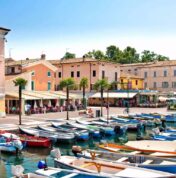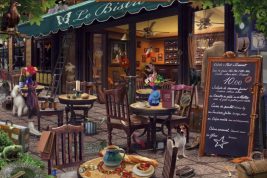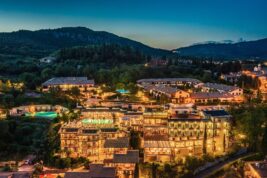The first documented settlements around the town of Costermano date back to the Bronze Age (1.800-1.000 BC), as evidenced by the retrieval of some pottery finds in the Maoni area, like vases with moon-shaped handles and biconical urns. This was probably a small agricultural and shepherd community organized in a few hutslocated on a morainic spur overlooking the Val dei Mulini (Mill Valley).
The petroglyphs (rock engravings) that depict warriors with swords and horsemen found on the “Sengie” (steep hills near the village of Marciaga) are instead a proof of the presence of human settlers during the Iron Age.
The development of actual stable groups from which the villages of Costermano, Marciaga, Castion and Sapora (Albarè) originated was strictly related to the presence of the domains of the Abbey of San Colombano di Bobbio (PC) before and, later, from the 8th century, of the Monastery of Santa Giulia di Brescia in the court of Cervinica (now called Baesse).
The monks evangelized the area and fostered the development of culture, trade, fishing and agriculture (mainly vines and olive trees), introducing important innovations and opening new trade routes.
The town of Costermano developed from the union of the smaller villages of Castion/Marciaga and Albarè della Gardesana. Until 1928 Costermano and Castionhad been two different villages but on April 9th of the same year they were united bya Royal Decree that established that Costermano would become the chief town.
The recent economic and demographic development of the area has been widelyfostered by its proximity to the Lake Garda district.
Costermano hosts the famous German Military Cemetery, the third most important one in Italy with a total of 22.000 buried bodies.
Costermano and its hamlets offer visitors a variety of fascinating natural landscapes and itineraries: if you follow the road to Garda at dusk, every day you will enjoy an amazing show of colours and shades created by the sun on the lake between sky water.











































































